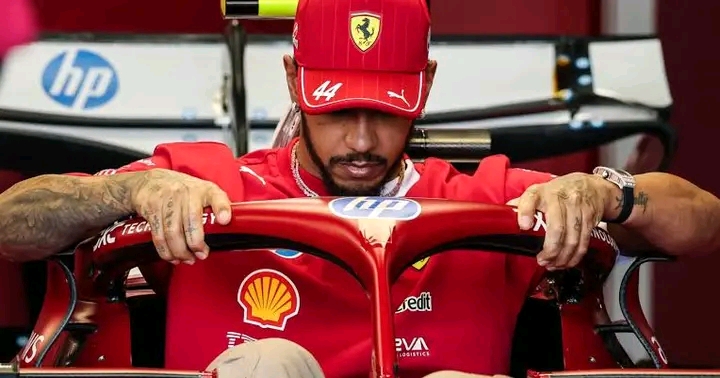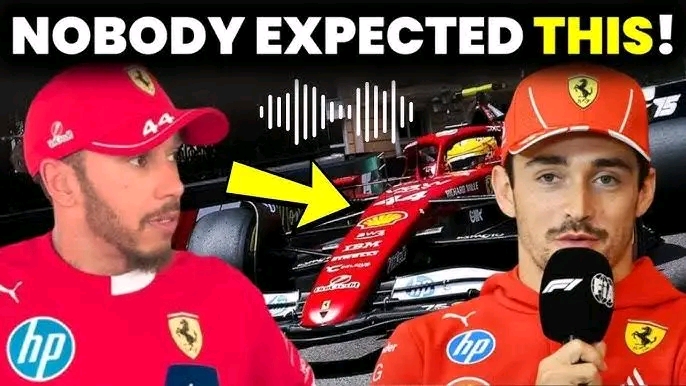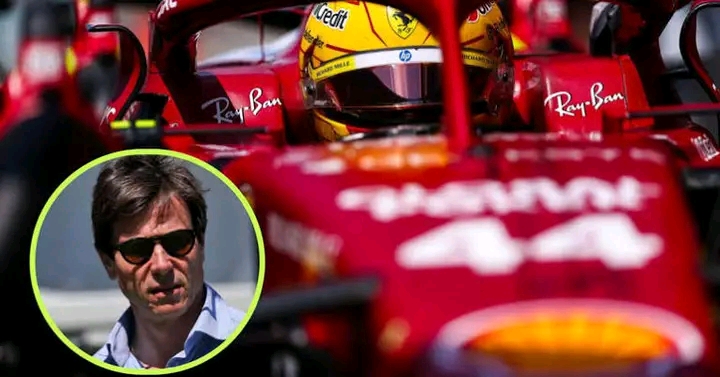Toto Wolff pinpoints three key issues costing Lewis Hamilton at Ferrari…
As the 2025 Formula 1 season unfolds, the much-anticipated switch of Lewis Hamilton to Scuderia Ferrari has captured the motorsport world’s attention. After more than a decade with Mercedes-AMG Petronas, Hamilton’s move was heralded as a seismic shift in F1’s competitive landscape. Yet, just half a season into his Ferrari tenure, the seven-time world champion has faced a string of underwhelming results. Now, his former team boss, Toto Wolff, has shed light on the challenges Hamilton is facing, pinpointing three core issues he believes are holding back the British superstar in red.In a recent interview, Wolff — still Mercedes’ Team Principal and CEO — offered candid insight into the dynamic at Ferrari and Hamilton’s adjustment period, blending his deep understanding of F1 politics, engineering, and driver psychology. “Lewis is still the same phenomenal driver,” Wolff began, “but when you change teams after such a long time, especially into an organization as unique as Ferrari, there are always going to be growing pains.”Here are the three key issues Wolff believes are currently undermining Hamilton’s performance at Ferrari:—1. Lack of Car Compatibility with Driving StylePerhaps the most technical of Wolff’s points revolves around car philosophy. Mercedes and Ferrari have long had distinct approaches to car development — from aero balance to chassis stiffness and power unit characteristics. According to Wolff, Ferrari’s 2025 car is fundamentally mismatched with Hamilton’s preferred driving style.“Lewis thrives in a car that gives him stability under braking and a predictable rear,” Wolff explained. “Ferrari’s current chassis still suffers from mid-corner instability, and that creates doubt — especially for a driver who builds so much of his racecraft on confidence through the corners.”Wolff also noted that Hamilton’s ability to extract peak performance depends heavily on his synergy with the car’s feedback loop. At Mercedes, years of co-development meant Hamilton was often at one with the machine. At Ferrari, he’s still learning how the car speaks to him.—2. Communication and Team IntegrationWolff’s second observation focused not on the car, but the culture. Ferrari’s team environment is known for its passion, but also for its complexity and internal politics. Hamilton, despite being a seasoned veteran, is still adapting to this new organizational dynamic.“Lewis built his empire within Mercedes,” Wolff said. “He had engineers around him for years — people who finished his sentences before he started them. At Ferrari, even though there’s a strong team, those bonds take time to form.”According to Wolff, Ferrari’s chain of command and sometimes bureaucratic communication style may be slowing down Hamilton’s feedback loop and his ability to influence car development. In a sport where milliseconds matter, that delay in synergy can translate into performance gaps on the track.“Don’t underestimate how vital it is for a driver to feel heard and understood. At Mercedes, we designed systems around Lewis. At Ferrari, he’s learning to fit into theirs.”—3. Pressure and Public Expectation in the Ferrari SpotlightFerrari comes with a unique weight of expectation. No team in Formula 1 is more mythologized, more scrutinized, or more pressured by fans and media alike. Hamilton may have been under pressure at Mercedes, but the Ferrari microscope is an entirely different beast — something Wolff was keen to emphasize.“Ferrari is not just a team, it’s a national institution,” Wolff remarked. “Every race is followed like a World Cup final in Italy. The moment results don’t come, the media frenzy starts. That pressure is relentless.”While Hamilton is no stranger to high stakes, Wolff suggested that Ferrari’s internal and external pressure cooker environment may be impacting his ability to focus fully on racing. The spotlight in Maranello doesn’t just burn bright — it scorches. Even the greatest drivers, from Alain Prost to Fernando Alonso, have found themselves caught in its glare.“Lewis thrives when he’s given space to breathe and innovate. At Ferrari, every move is watched, every comment dissected. That takes an emotional toll.”—Looking Forward: Time or Trouble?Despite these challenges, Wolff expressed confidence in Hamilton’s resilience. “Lewis is a warrior. If anyone can adapt and overcome, it’s him. But Ferrari needs to meet him halfway — culturally, technically, and strategically.”For now, Hamilton sits mid-pack in the 2025 Drivers’ Championship, while Ferrari continues to lag behind Red Bull and McLaren in the Constructors’ standings. The dream partnership between the most iconic driver and the most storied team is, for the moment, struggling to lift off. But in F1, fortunes can turn quickly.Wolff concluded with a message of cautious optimism: “This isn’t the end of the story. Ferrari knew what they were getting with Lewis — not just a driver, but a force of nature. The key now is giving him the tools, the trust, and the time.”Only time will tell if that formula will bring Hamilton — and Ferrari — back to championship glory.





